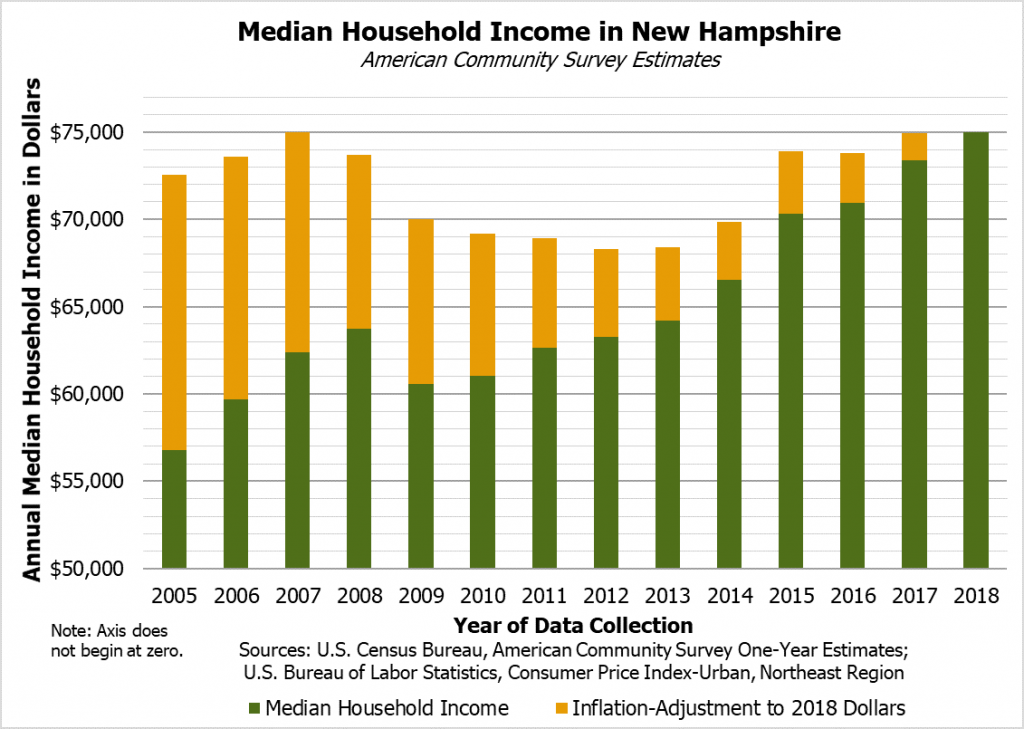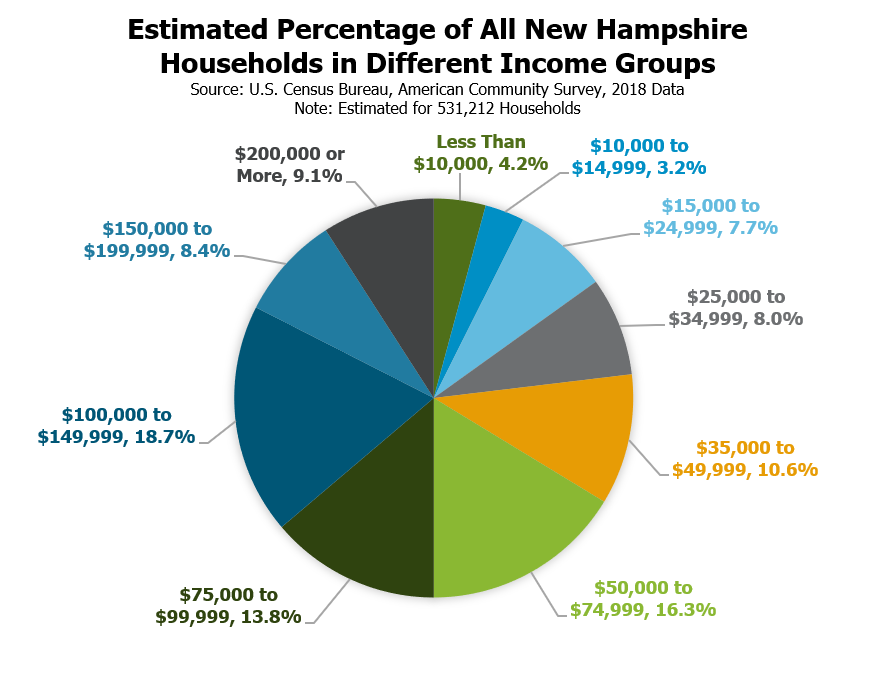Median household incomes and key poverty rates remained essentially the same in New Hampshire from data collected in 2017 to 2018 data, suggesting economic growth in the state did not boost the overall purchasing power of people with low or middle incomes relative to inflation. New data published today by the U.S. Census Bureau show poverty rates and household incomes held steady in the state, while poverty declined slightly and median household income edged upward at the national level.
Median household income in New Hampshire remained about the same in the data collected during 2018 as it did in 2017, with an estimated median household income of $74,991. While this is higher than the 2017 estimate of $73,381, uncertainty stemming from these survey data renders these estimates statistically indistinguishable from one another. Additionally, adjusting for inflation shows the 2017 estimate is nearly exactly the same as the 2018 estimate when both are expressed in 2018 dollars. This indicates median household income in New Hampshire is still about the same as the levels reached prior to the Great Recession of 2007-2009, and the long economic expansion since that time still has not increased these median incomes beyond those levels.
The estimates released today also suggest that income inequality between households in New Hampshire grew between 2017 and 2018, as it did nationally. The U.S. Census Bureau calculates the Gini Index (a standard measure of income inequality) for each state, and found that New Hampshire was one of nine states in which income inequality among households increased relative to the prior year.
Overall, median household income is relatively high in New Hampshire. Compared to other states and the District of Columbia, New Hampshire has about the eighth-highest median household income, although uncertainty in the survey data renders the estimate statistically indistinguishable from Connecticut (#6), California (#7), Washington (#9), and Alaska (#10).
However, about one in three New Hampshire households had less than $50,000 per year in annual income, and more than one in five had less than $35,000. Around 23,000 households had less than $10,000 in income.
The number of Granite Staters living in poverty was also unchanged in the 2018 data. The U.S. Census Bureau’s poverty-level income threshold for 2018 is $13,064 for an individual less than 65 years old and $20,212 for a family of three with one child. About 100,000 Granite Staters lived in poverty, the same number as in the 2017 data and approximately equivalent to the estimated 2018 populations of Berlin, Exeter, Keene, Lebanon, Milford, and Portsmouth combined. Around 49,000 people lived at less than half of poverty-level income, while 136,000 lived at less than 125 percent of poverty-level income.
The overall poverty rate was 7.6 percent, the lowest poverty rate of any state in the nation and statistically unchanged from last year’s 7.7 percent. The poverty rate for those under 18 years old also remained virtually the same, at 10.6 percent relative to 10.3 percent in 2017, after increasing from 7.9 percent in the 2016 data. The poverty rate for those aged 65 and older was also statistically unchanged from the 5.8 percent estimated in the 2017 data, with approximately 5.5 percent of those aged 65 and older estimated to be in poverty in 2018.
The lack of change in the Granite State’s poverty rate, which is based on a federal threshold adjusted annually to reflect inflation, and in state median household income provide additional evidence that, while the New Hampshire economy is doing well overall, not all residents are seeing their purchasing power grow relative to the cost of living.
For more on the New Hampshire economy, see NHFPI’s August Issue Brief New Hampshire’s Workforce, Wages, and Economic Opportunity.
– Phil Sletten, Policy Analyst


